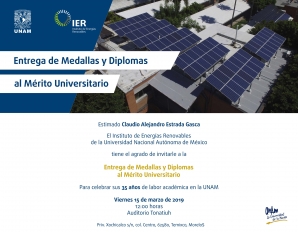Nidia Aracely Cisneros-Cárdenas, Rafael Cabanillas-López, Ricardo Pérez-Enciso, Guillermo Martínez-Rodríguez, Rafael García-Gutiérrez, Carlos Pérez-Rábago, Ramiro Calleja-Valdez and David Riveros-Rosas
Abstract
The radiation flux distributions produced by the concentrating solar systems used to produce thermal/electrical power are usually non-homogeneous. This results in non-uniform temperature distributions on the solar receivers, causing adverse effects on the system’s overall performance. An approach to better understand the problem is to study the surfaces around the focal zone where the radiation density is homogeneous (isosurfaces), generating them from experimental data. For this, it is necessary to superimpose built volumes of the different irradiance levels using parallel planes in different directions from the focal point of a concentrator. These volumes are known as effective volumes. This study presents the model used to generate effective volume produced by a point focus concentrator, comparing it with experimental results in a direction perpendicular to the focal axis. The effective volumes were developed considering a global optical error of the system of 2.8 mrad. The set of methods used to generate effective volumes has not been previously presented in the literature. The theoretical-experimental research consisted of the combination of the camera-target method and the simulations by the ray-tracing technique. The results showed effective volumes with the highest value of 10 MW/m2 and the lowest value of 4.5 MW/m2.
Study of the Radiation Flux Distribution in a Parabolic Dish Concentrator

